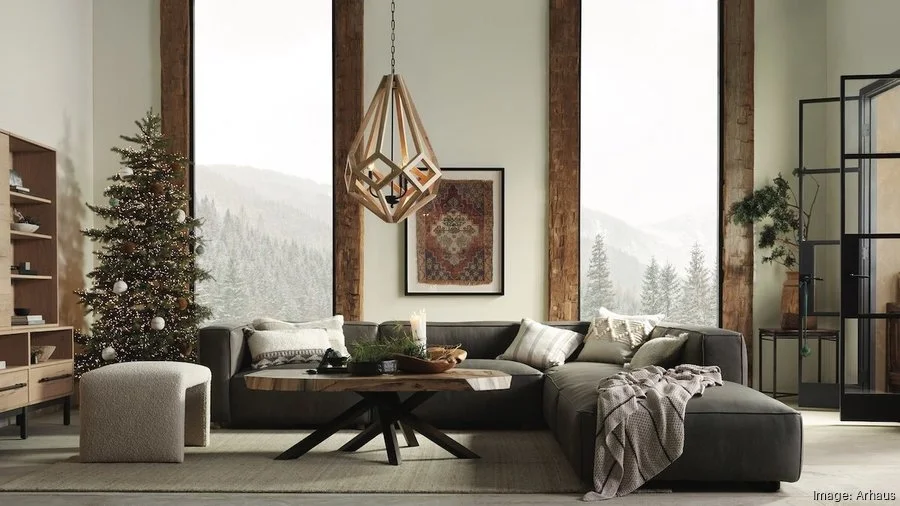Elevate Your Space With Artisan Furniture Quality Craftsmanship

Artisan furniture is characterized by the meticulous craftsmanship and attention to detail put into each piece. Unlike mass-produced furniture, artisan pieces are often handmade by skilled craftsmen who possess a deep understanding of their materials and techniques. Every cut, joint, and finish is carefully considered to ensure both functionality and aesthetic appeal. Additionally, artisan furniture often incorporates unique design elements that showcase the individuality of the maker, making each piece one-of-a-kind.
The Artisan Approach
The Craftsmanship Behind Artisan Furniture
The craftsmanship behind artisan furniture involves a blend of traditional techniques and innovative approaches. Artisans typically spend years honing their skills, mastering woodworking, metalworking, upholstery, and other specialized crafts. This expertise allows them to create furniture that not only looks beautiful but also stands the test of time. From hand-carved details to hand-forged metal accents, every aspect of artisan furniture reflects the dedication and skill of the craftsman.
Benefits Of Choosing Artisan Furniture Over Mass-Produced Options
Opting for artisan furniture offers several advantages over mass-produced alternatives. Firstly, artisan pieces are often of higher quality, as they are made with superior materials and greater attention to detail. This results in furniture that is more durable and long-lasting, making it a worthwhile investment for your home. Additionally, by choosing artisan furniture, you are supporting small-scale craftsmen and artisans, contributing to the preservation of traditional crafts and techniques. Finally, artisan furniture allows you to express your individual style and personality, as each piece is unique and imbued with the character of its maker.
Materials Used In Artisan Furniture
Wood Selection
Wood is a primary material used in artisan furniture, prized for its beauty, durability, and versatility. Artisans carefully select the finest hardwoods, such as oak, walnut, cherry, and mahogany, for their furniture pieces. Each type of wood offers unique characteristics and grain patterns, allowing artisans to create pieces that are both visually stunning and structurally sound. Additionally, many artisans prioritize sustainable wood sourcing, opting for responsibly harvested or reclaimed wood to minimize environmental impact.
Metalwork
Metal accents are often incorporated into artisan furniture to add visual interest and structural support. From hand-forged iron to intricately welded steel, metalwork in artisan furniture showcases the skill and creativity of the craftsman. Whether used as decorative elements, such as table legs or drawer pulls, or as functional components, such as frame reinforcements, metal adds a touch of sophistication and elegance to artisan pieces.
Upholstery And Fabrics
Upholstered furniture allows artisans to experiment with different textures, patterns, and colors, adding depth and personality to their creations. Artisans carefully select high-quality fabrics, leathers, and upholstery materials to ensure both comfort and durability. Whether it’s a plush sofa, a cozy armchair, or a stylish ottoman, upholstered artisan furniture combines expert craftsmanship with luxurious comfort, creating pieces that are as inviting as they are beautiful.
Styles Of Artisan Furniture
Traditional Artisan Designs
Traditional artisan furniture designs draw inspiration from historical styles and craftsmanship techniques. From classic European furniture to timeless Shaker and Arts and Crafts designs, traditional artisan pieces often feature intricate details, such as hand-carved motifs, dovetail joints, and turned legs. These timeless designs pay homage to the rich history of furniture making while offering enduring beauty and functionality for modern homes.
Contemporary Artisan Trends
Contemporary artisan furniture embraces innovative design concepts and materials, pushing the boundaries of traditional craftsmanship. From sleek, minimalist pieces to bold, experimental creations, contemporary artisan furniture reflects the evolving tastes and preferences of today’s consumers. Artisans often incorporate modern technologies, such as CNC machining and 3D printing, into their work, allowing them to create intricate patterns and shapes with precision and efficiency.
Fusion Styles In Artisan Furniture
Fusion styles in artisan furniture combine elements from different cultural traditions, resulting in eclectic and visually striking pieces. Whether blending Eastern and Western aesthetics or merging traditional and modern influences, fusion artisan furniture celebrates diversity and creativity. These hybrid designs often feature unexpected combinations of materials, finishes, and techniques, resulting in truly unique and eclectic pieces that defy categorization.
Sustainable Practices In Artisan Furniture Making
Ethical Sourcing Of Materials
Ethical sourcing of materials is a cornerstone of artisan furniture making, ensuring that the wood, metal, and other raw materials used are obtained responsibly and sustainably. Artisans often prioritize materials that are certified by organizations such as the Forest Stewardship Council (FSC) or sourced locally to minimize environmental impact and support local economies. By choosing artisan furniture made from ethically sourced materials, consumers can feel confident that their purchase is not contributing to deforestation or exploitation of natural resources.
Eco-Friendly Manufacturing Processes
In addition to ethical sourcing, artisan furniture makers employ eco-friendly manufacturing processes to minimize waste and reduce environmental footprint. This may include using non-toxic finishes and adhesives, recycling scrap materials, and implementing energy-efficient production methods. By prioritizing sustainability throughout the manufacturing process, artisans not only reduce their environmental impact but also create furniture that is healthier for both consumers and the planet.
Longevity And Durability Of Artisan Pieces
One of the most sustainable aspects of artisan furniture is its longevity and durability. Unlike mass-produced furniture, which is often designed for planned obsolescence, artisan pieces are built to last for generations. By investing in high-quality, well-crafted furniture, consumers can reduce the need for frequent replacements and minimize waste. Additionally, many artisans offer repair and restoration services, ensuring that their pieces can be enjoyed for years to come.
The Impact Of Artisan Furniture On Local Communities
Supporting Local Artisans And Craftsmen
Purchasing Artisan Furniture directly supports local artisans and craftsmen, providing them with a sustainable livelihood and allowing them to continue practicing their craft. By investing in local talent, consumers contribute to the vitality of their communities and help preserve traditional skills and techniques for future generations.
Preservation Of Traditional Techniques
Artisan furniture making is often deeply rooted in traditional techniques that have been passed down through generations. By choosing artisan pieces, consumers help preserve these time-honored skills and ensure that they are not lost to automation or mass production. This preservation of traditional craftsmanship enriches cultural heritage and fosters a sense of pride and identity within local communities.
Economic And Cultural Significance
The artisan furniture industry plays a significant role in the economic and cultural landscape of many regions around the world. In addition to providing employment opportunities, artisan furniture making contributes to tourism and cultural exchange, showcasing the unique artistic traditions of different communities. By supporting artisanal enterprises, consumers can help promote economic development and cultural diversity, fostering vibrant and resilient communities.
Tips For Buying Artisan Furniture
Researching Artisans And Their Work
Before making a purchase, it’s important to research artisans and their work to ensure authenticity and quality. Look for artisans with a reputation for excellence and integrity, and take the time to familiarize yourself with their design aesthetic and craftsmanship techniques.
Evaluating Quality And Authenticity
When buying artisan furniture, pay close attention to the quality of materials and construction. Examine the joinery, finish, and overall craftsmanship of the piece to ensure that it meets your standards for durability and authenticity. Ask the artisan about their materials and techniques, and don’t be afraid to ask for references or testimonials from satisfied customers.
Conclusion:
Artisan furniture offers a unique blend of beauty, craftsmanship, and sustainability that is unmatched by mass-produced alternatives. By choosing artisan pieces, you not only enhance the aesthetic appeal of your home but also support local artisans, preserve traditional techniques, and contribute to a more sustainable future. Whether you’re drawn to the timeless elegance of traditional designs or the innovative creativity of contemporary styles, artisan furniture offers something truly special for every home. Embrace the artistry and authenticity of artisan furniture, and elevate your living space with pieces that are as meaningful as they are beautiful.





